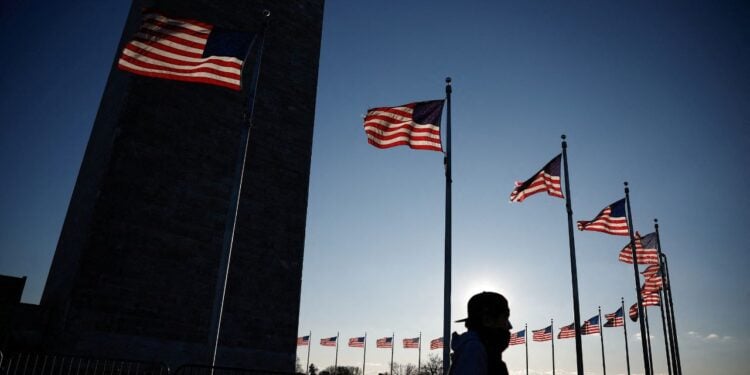U.S. job growth surged in November after being severely hindered by hurricanes and strikes, but a rise in the unemployment rate to 4.2% pointed to an easing labor market that should allow the Federal Reserve to cut interest rates again this month.
The labor market’s resilience is driving the economy, with the closely watched employment report from the Labor Department on Friday showing solid wage growth last month.
The economy created 56,000 more jobs in September and October than previously estimated.
“Today’s payroll report reinforces the case for a Fed cut in December, but without inciting any meaningful worries about the labor market,” said Seema Shah, chief global strategist at Principal Asset Management.
Nonfarm payrolls increased by 227,000 jobs last month after rising by an upwardly revised 36,000 in October, the Labor Department’s Bureau of Labor Statistics said.
Economists polled by Reuters had forecast payrolls would gain 200,000 jobs following a previously reported rise of 12,000 in October.
Estimates for the job gain ranged from 155,000 to 275,000. Job growth has averaged 172,000 per month over the past three months.
The acceleration in employment gains was led by healthcare, with a rise of 54,000 jobs spread across ambulatory healthcare services, hospitals, nursing and residential care facilities.
Leisure and hospitality payrolls increased by 53,000 jobs, which were concentrated at restaurants and bars. Government employment increased by 33,000 positions, lifted by gains in state government.
Manufacturing payrolls rebounded by 22,000 positions as the end of strikes at Boeing and another smaller aerospace company boosted transportation equipment jobs by 32,000. Social assistance payrolls increased by 19,000 jobs.
But the retail sector shed 28,000 jobs, mostly reflecting losses at general merchandise retailers. Electronics and appliance retailers, however, added 4,000 jobs.
The labor market reeled in October from Hurricanes Helene and Milton as well as the aerospace strike. The initial October payrolls count also likely had been curtailed by a shorter collection period of responses to the survey of establishments from which payrolls are derived.
The initial response rate for the establishment survey was 47.4%, the lowest reading since January 1991 and well below the 69.2% average for October in the past five years. The collection period for the responses was only 10 days, on the lower end of the normal 10 to 16 days.
U.S. Treasury yields fell after the release of the data. The dollar was little changed against a basket of currencies. U.S. stocks opened higher.
Weak Household Employment
The increase in the jobless rate after holding at 4.1% for two straight months reflected weakness in household employment. The smaller household survey from which the unemployment rate is compiled showed a decline of 355,000 jobs.
About 193,000 people left the labor force in November. That pushed the labor force participation rate, or the proportion of working-age Americans who have a job or are looking for one, down to 62.5% from 62.6%.
Financial markets saw a roughly 89% chance of a quarter-percentage-point rate cut at the U.S. central bank’s Dec. 17-18 policy meeting, up from 72% earlier, CME Group’s FedWatch tool showed.
The Fed has lowered interest rates by 75 basis points since September, when it launched its easing cycle. Its policy rate is now in the 4.50%-4.75% range, having been hiked by 5.25 percentage points between March 2022 and July 2023.
Strong wage growth should continue to fuel consumer spending and keep the economic expansion on track.
Average hourly earnings increased 0.4% last month, matching October’s gain. In the 12 months through November, wages advanced 4.0% after rising by the same margin in October.
With the economy continuing to expand at a healthy pace, inflation stuck above the central bank’s 2% target and uncertainty about the policies of President-elect Donald Trump’s incoming administration, the outlook for further rate cuts in 2025 is unclear.
Business sentiment perked up in the aftermath of Trump’s victory in the Nov. 5 election on hopes of less regulation. But his promises to raise tariffs on imports and carry out mass deportations of migrants have raised concerns of higher prices and disruptions to the labor market.
Traders are betting on another two rate cuts next year, with a better-than-even chance of a third reduction in borrowing costs by the end of 2025.
(Reporting by Lucia Mutikani; Editing by Chizu Nomiyama and Paul Simao)


 Dr. Gleb Tsipursky – The Office Whisperer
Dr. Gleb Tsipursky – The Office Whisperer Nirit Cohen – WorkFutures
Nirit Cohen – WorkFutures Angela Howard – Culture Expert
Angela Howard – Culture Expert Drew Jones – Design & Innovation
Drew Jones – Design & Innovation Jonathan Price – CRE & Flex Expert
Jonathan Price – CRE & Flex Expert














